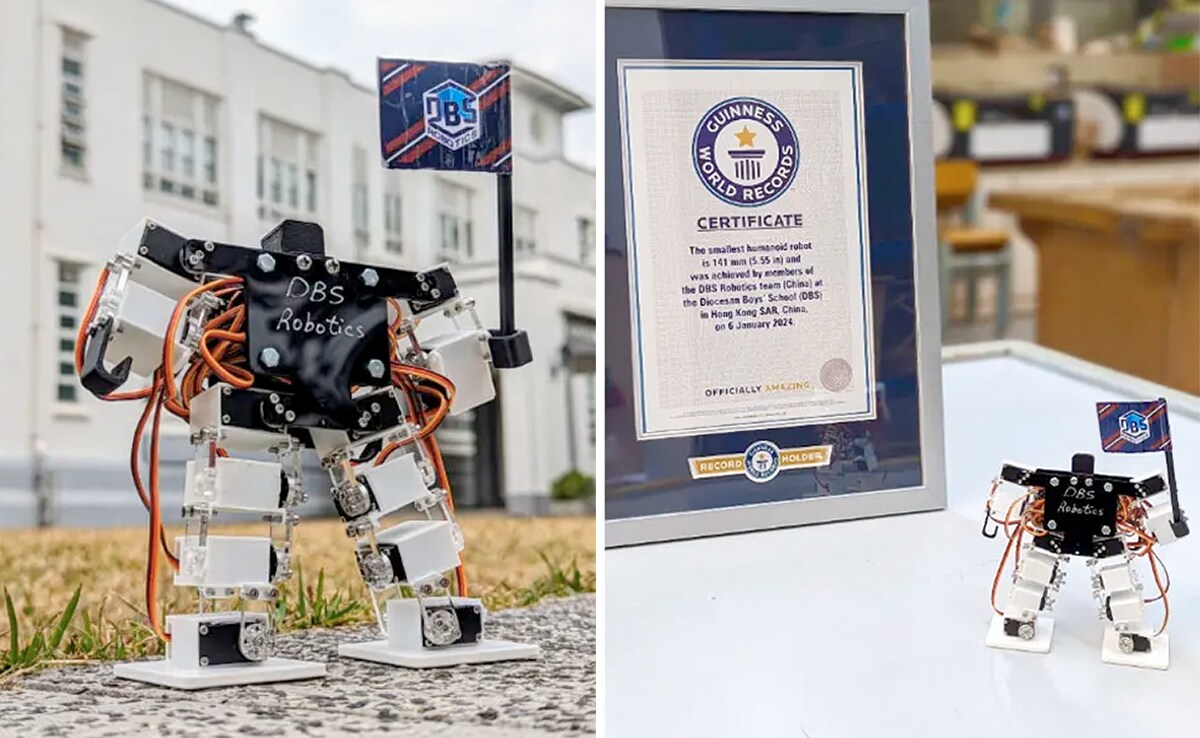
The new record-breaking bot was designed and built by 4 students.
Four Hong Kong students etched their names in history by building the world’s tiniest humanoid robot. Aaron Ho Yat Fung, Isaac Zachary To, Justin Wang Tou Duong, and Ngo Hei Leung, from the Diocesan Boys’ School robotics team, shrank the previous record by nearly half an inch, crafting a marvel measuring just 5.55 inches, according to the Guinness World Records.
This mini marvel not only walks on two legs but can also bend its shoulders, elbows, knees, and hips, meeting the strict Guinness World Record requirements. But their ambition goes beyond bragging rights. These budding engineers hope their creation will become an affordable educational tool, inspiring future generations of young minds, regardless of background.
A team of students designed and built the versatile robot with articulated shoulders, elbows, knees, and hips, capable of bipedal movement.
Utilizing computer-aided design (CAD), they specified technical requirements and contracted a factory to produce precision servo motors for limb control.
Servo motors, also known as ‘servos’, are electronic devices that rotate and push parts of a machine with precision, allowing the students’ robot to move its legs and arms.
The 16-channel servo control board facilitated programming, with additional hardware components acquired for assembly.
The robot’s acrylic panels and 3D-printed parts were crafted in the school’s robotics lab.
Initial challenges with a large battery led to opting for a smaller 7.4V lithium-ion battery.
The control board, affixed to the robot’s back, enabled onboard button control and mobile app interaction.
“We also plan to open-source the design and programming code to further our objectives of promoting STEAM education,” said Isaac.




